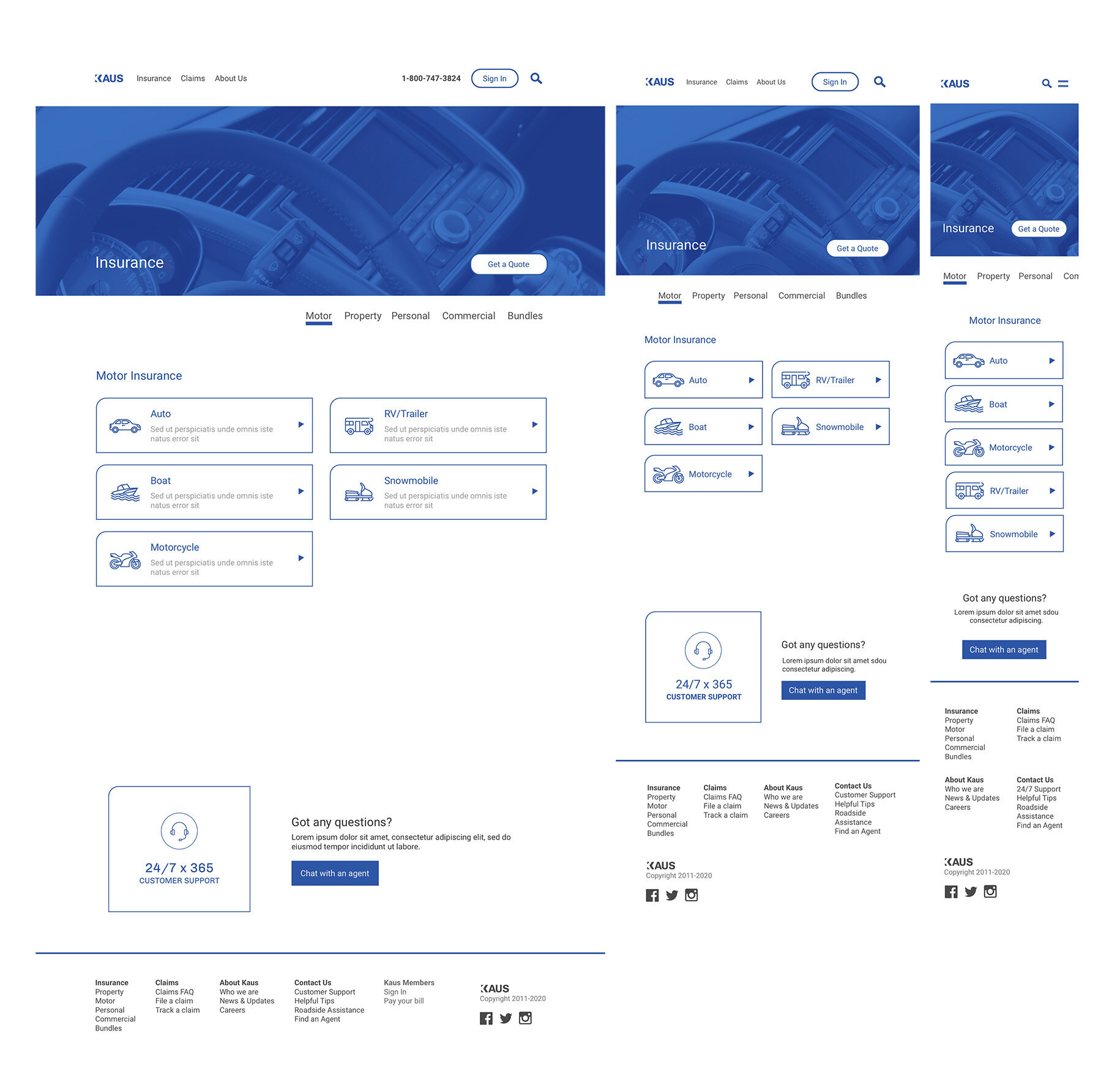A Personalized E-Commerce Platform for Modern Insurance
After 30 years of selling insurance through regional agents, Kaus is pivoting to direct-to-consumer sales with a new online platform to reach a younger, digital-first audience. (Speculative Project)
Our design process covered user research, information architecture, wireframing, branding, UI design, prototyping, and usability testing.
Consumer Feedback
We conducted consumer interviews to learn more about their experience finding and purchasing insurance policies online. These were the key findings from our interviews:
Pain Points & Frustrations
Finding coverage is tiresome and confusing
Complicated insurance jargon (terminology)
Lack of transparency
Long wait times on support calls
Wants & Needs
Straightforward quote process
Low & competitive pricing
Great customer service
Ease of use (tech-friendly platform)
Based on our findings, we created a user persona and an empathy map to help me further define the project requirements.
MVP
We took our research findings to put together the key requirements for an MVP.
Homepage: Features primary navigation, a global search that allow users to find specific insurance products and claims section with links to file and view a claim
Insurance Products Page: An organized list of all insurance products divided into different categories
Get a Quote Page: Forms to collect user’s information to provide a personalized quote for selected insurance type
Sitemap
It was important to Kaus to innovate on how the information was organized on their new site, so we used card sorting to come up with a viable site map
User Flows
Another critical element of information architecture is mapping how users would find and interact with the website: from the site discovery to finalizing the insurance purchase. To accomplish that, we created a few user flows to present how our persona would interact with Kaus's website.
Low-Fidelity Concepts




Brand Redesign
Kaus wanted their key values (competitive, transparent and trustworthy) to reflect in their new logo and branding. We used this brief to design a style tile and UI kit as part of their new brand identity.
Designing the User Interface
The last step in the visual design process was designing all of the individual pages using corresponding wireframes and branding elements. We then adapted them into a responsive design for desktop. tablet and phone.





